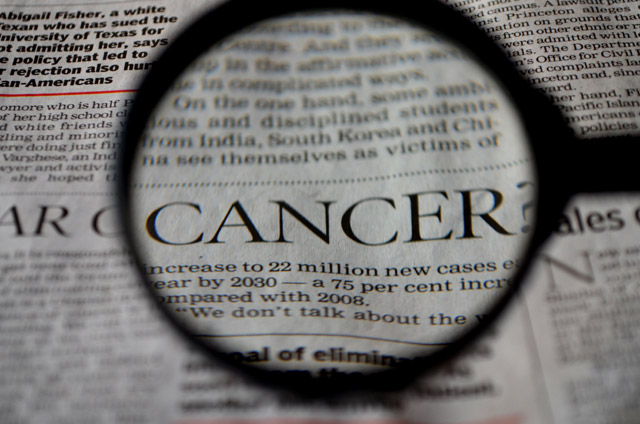Cancer is a particularly awful disease with potentially devastating effects. Most of us have been affected by it either directly, through the illness of family, friends or acquaintances or, more painfully, though the death of a loved one. But, what is cancer and how does it begin its journey of destruction?
Cancer is the process by which cells start to grow out of control and start crowding out normal cells. According to Dr Anthony A Goodman (1) one of the major characteristics of cancer cells is their failure to “differentiate” (grades of cancer are determined by the cells’ level of differentiation – see later). The process of differentiation starts with stem cells.
Our bodies have a store of cells, known as stem cells, which serve as the body’s internal repair system, replacing damaged or dead cells wherever needed. In the initial state they are undifferentiated (unspecialised) but, through the process of cell division, they are able to replenish themselves and also become specialised cells in any part of the body.
Stem cells undergo many divisions in an undifferentiated state (mitosis). When a cell divides it produces 2 daughter cells. One is exactly like the stem cell and replenishes the pool of stem cells while the other divides further and, as it divides, it becomes more and more specialised (differentiated). It goes though different pathways to become a functional cell in any part of the body. Once a cell is fully specialised it is said to have reached terminal differentiation (it cannot differentiate itself any further, cannot become undifferentiated and, therefore, cannot become cancerous).
It is in the process of cell division and differentiation that a mutation, caused by a “carcinogen” (2) (substance capable of causing cancer), can occur and lead to cancer. In other words, something happens along the pathway from stem cell to a fully mature and fully differentiated (specialised) cell that sets it on the path to cancer. The incidence of cancer, therefore, is at its highest in those areas of the body where the death and replenishment (division) of cells occurs the most often (skin, intestines and stomach).
The grade of cancer, the rate at which it grows and spreads, depends on when the mutation (and potential cancer) had occurred during the process of the cell’s division between stem cell and its fully differentiated (specialised) stage. The earlier the mutation occurs, the less differentiation, and the more aggressive it is (higher grade). Conversely, the later the mutation occurs in the process of differentiation the less aggressive it is (lower grade). The grading system is:
- G1: Well differentiated (low grade)
- G2: Moderately differentiated (intermediate grade)
- G3: Poorly differentiated (high grade)
- G4: Undifferentiated (high grade)
(1) The Human Body: How we fail, how we heal, The Great Courses, Lecture 19.
(2) A list of known and probable human carcinogens can be found on the American Cancer Society page.
References:
The Human Body: How we fail, how we heal, The Great Courses, Lectures 19-23.
Stem Cell Basics, The National Institutes of Heath
Tumor Grade, National Cancer Institute
Genes, DNA & Cancer, Cancer Research UK.
Please note that I am not a doctor or researcher and only have a layman’s knowledge of this subject. I have family, friends, clients and acquaintances who have been affected by cancer and, as a result, have done quite a lot of research. This is intended to be a layman’s explanation of the cancer process.
